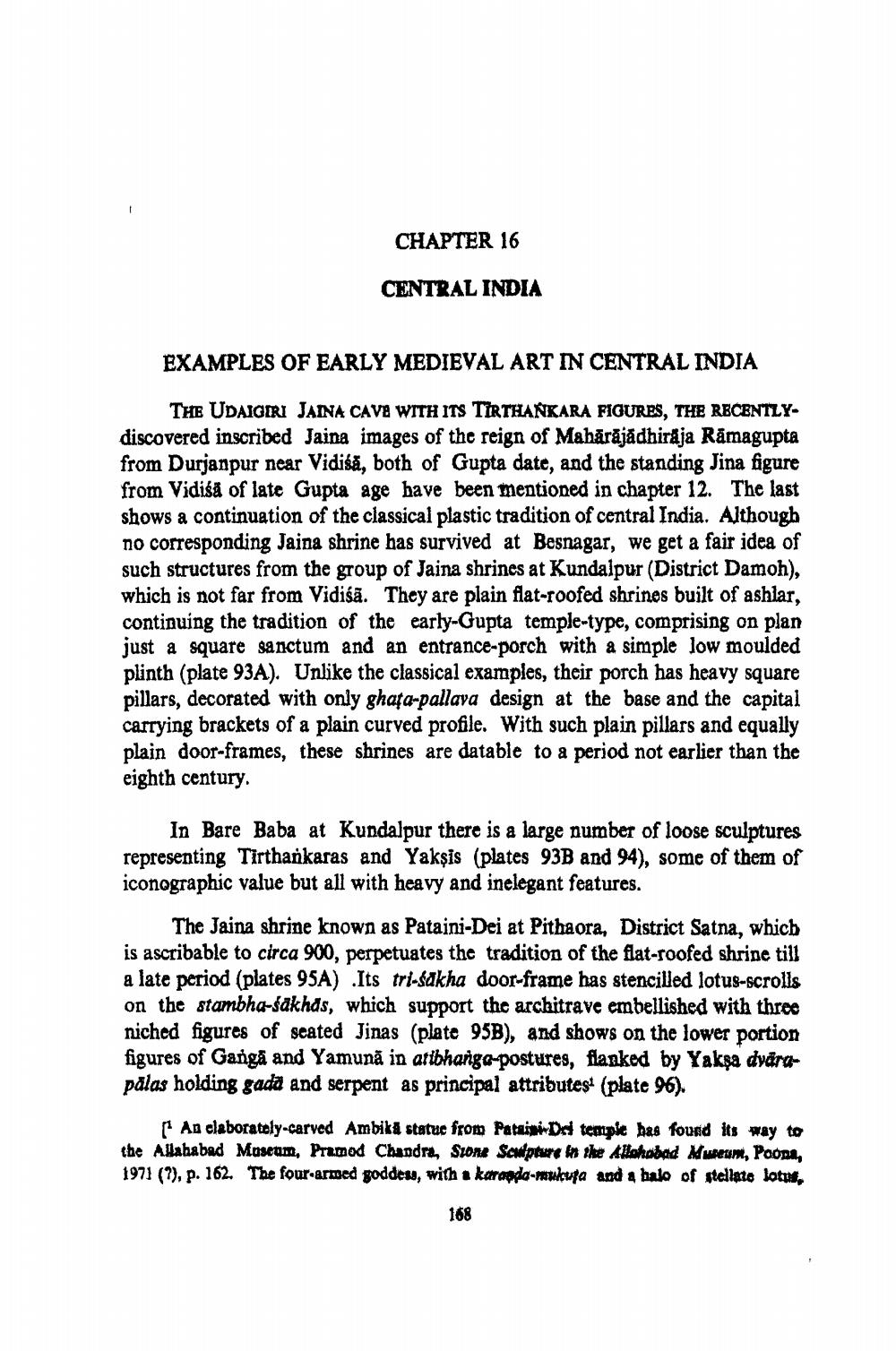________________
CHAPTER 16
CENTRAL INDIA
EXAMPLES OF EARLY MEDIEVAL ART IN CENTRAL INDIA
THE UDAIGIRI JAINA CAVE WITH ITS TIRTHANKARA FIGURES, THE RECENTLYdiscovered inscribed Jaina images of the reign of Mahārājādhirāja Rāmagupta from Durjanpur near Vidisă, both of Gupta date, and the standing Jina figure from Vidisă of late Gupta age have been mentioned in chapter 12. The last shows a continuation of the classical plastic tradition of central India. Although no corresponding Jaina shrine has survived at Besnagar, we get a fair idea of such structures from the group of Jaina shrines at Kundalpur (District Damoh), which is not far from Vidiśa. They are plain flat-roofed shrines built of ashlar, continuing the tradition of the early-Gupta temple-type, comprising on plan just a square sanctum and an entrance-porch with a simple low moulded plinth (plate 93A). Unlike the classical examples, their porch has heavy square pillars, decorated with only ghata-pallava design at the base and the capital carrying brackets of a plain curved profile. With such plain pillars and equally plain door-frames, these shrines are datable to a period not earlier than the eighth century.
In Bare Baba at Kundalpur there is a large number of loose sculptures representing Tirthankaras and Yaksis (plates 93B and 94), some of them of iconographic value but all with heavy and inelegant features.
The Jaina shrine known as Pataini-Dei at Pithaora, District Satna, which is ascribable to circa 900, perpetuates the tradition of the flat-roofed shrine till a late period (plates 95A) .Its tri-sakha door-frame has stencilled lotus-scrolls on the stambha-sakhds, which support the architrave embellished with three niched figures of seated Jinas (plate 95B), and shows on the lower portion figures of Ganga and Yamuna in atibhanga-postures, flanked by Yaksa dvarapālas holding gada and serpent as principal attributes' (plate 96).
[An elaborately-carved Ambika statue from Pataimi-Dei temple has found its way to the Allahabad Museum, Pramod Chandra, Stone Sculpture in the Allahabad Museum, Poona, 1971 (7), p. 162. The four-armed goddess, with a karanda-mukuja and a halo of stellate lotus,
168




